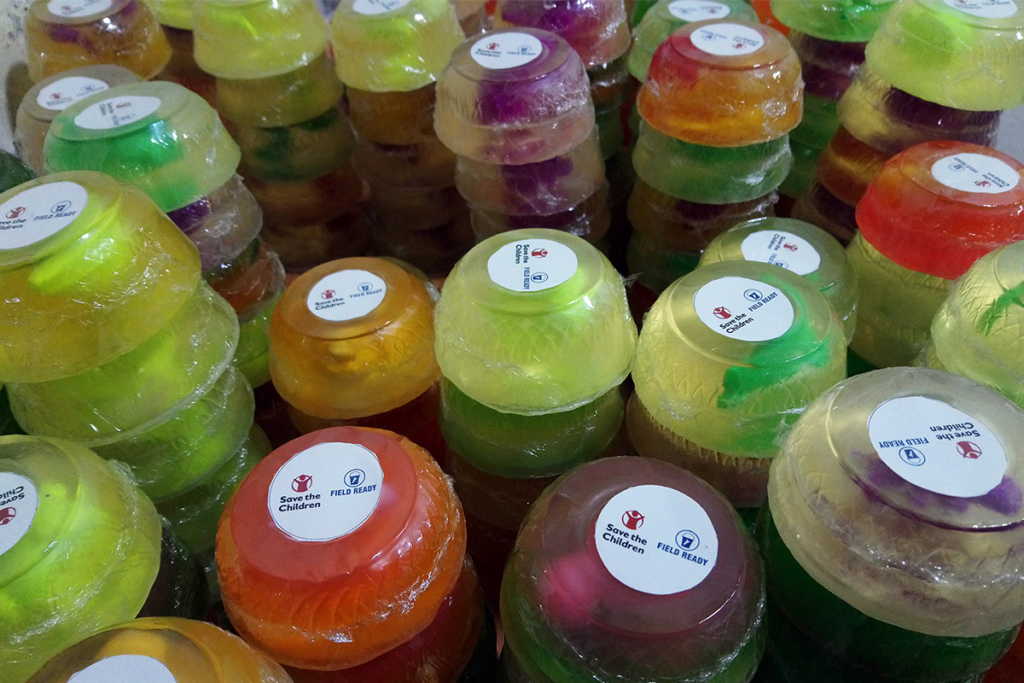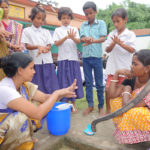There is nothing more satisfying in life, for me, than being able to say: I never thought of it that way. The most game-changing innovations can often have seemingly common sense solutions, and we see these solutions popping up everywhere in peer-reviewed literature.
One of those published solutions jumped out at me this week as I read a Crowd 360 blog post about innovative hand hygiene interventions to celebrate Global Handwashing Day. Researchers from LSHTM, Save the Children and their partners published new evidence showing toys inside soap can increase handwashing among kids in emergency humanitarian contexts.
What makes the toy-in-soap study different?
In the article, “Child’s play: Harnessing play and curiosity motives to improve child handwashing in a humanitarian setting,” Watson, et al. detail what sets their study apart from all the other handwashing with soap evidence produced to date. Three of those details caught my attention.
First, the authors note the “explicit use” of motivations to improve handwashing with soap among kids has not ever been implemented in emergency humanitarian contexts until now. Using modified soaps with a toy inside to incentivize behavior change has previously shown improvements in handwashing among kids – but only in a non-emergency context in South Africa (Burns, et al., 2018). Watson, et al. conduct their study at the Sharia Camp for internally displaced persons (IDPs) in the Kurdistan region of northern Iraq.
Second, while interventions have previously targeted the motivations of play and curiosity (two of the 15 motives purported to drive all human behavior in the Evo-Eco theory), no studies before now have focused on these two motives as a “mechanism of behavior change.” Play and curiosity are especially relevant for interventions targeting kids (Perry, et al., 2000).
Third, Watson, et al. administer their intervention in the home with a focus on primary school age kids. That household focus in and of itself is not unique, but previous studies have been mostly school-based. School-based interventions miss kids not in school and are “inappropriate for implementation” during initial stages of emergencies when schools have not been set-up yet. Focusing on the household setting instead of the school ensures no kids are left out.
What was the intervention and what were the findings?
Watson, et al. use a controlled before-and-after study design to test whether a “short and rapidly deployable” intervention that “appeals to the motives of play and curiosity” improves handwashing among older kids (ages 5–12) in an emergency context. After dividing the ethnically homogenous Sharia Camp into five sections, the two sections furthest apart became the control and intervention groups. Field workers recruited eligible households using random selection, then completed a short socio-demographic survey with the participating households, and then collected baseline data of handwashing with soap (for the kids) using structured observations over a three-hour period.
Two weeks later, hygiene promoters delivered a ten-minute interactive session for the intervention group. First, the promoters played a game with glue-covered hands and glitter to demonstrate the transfer of germs when kids high-five each other. Next, the promoters conducted a demonstration of how to wash the glitter germs off using transparent soap with an animal toy inside. If the kids washed often enough, the toy locked away in the soap became available for play. The interactive session included no health-based messages and no other formal instructions which allowed the intervention to be implemented without additional training for the hygiene promoters.
In the control group households, hygiene promoters delivered a standardized Save the Children handwashing promotion session. The session lasted up to ten minutes and consisted of health-based messages on disease risks and germs, key moments for handwashing, and a demonstration of handwashing. Kids in the control group did not play the glitter germs game.
Each intervention household (n = 40) received five bars of soap with a toy inside. Each control household (n = 40) received five identical bars of soap but without a toy inside. Field workers returned four weeks after the delivery of the intervention to measure the number of toy cheats (how many times the soap had been broken open to release the toy early) and indicators of soap use using the same structured observation technique.
Interestingly to me, among the intervention group, only one household reported cheating to get to the toy early (wow!) and the prevalence of handwashing with soap increased 16 percent. The control group experienced a decreased prevalence of 19 percent. Watson, et al. detail their thoughts on this decrease in the paper, as well as a discussion about other limitations and potential biases. In the short-term though, the results are encouraging.
Why do the findings matter?
Humanitarian crises pose complex challenges. For example, health concerns like diarrhea and respiratory infections are exacerbated in crowded emergency situations. Data from the 2016 Global Burden of Disease studies show older kids ages 5–14 (reminder: Watson, et al. targeted this primary school age group) bear a substantial diarrheal and respiratory disease burden. A mountain of research shows handwashing with soap can lessen the impact of those health concerns. (This blog post from the Global Handwashing Partnership’s Carolyn Moore highlights new handwashing research from just 2017 alone.)
Before reading this new article, I never thought that toys inside soap could make such a difference with increasing handwashing. It feels like common sense though, yes? As the number of global humanitarian emergencies continues to increase, new research like that conducted by Watson, et al. shows that simple, innovative solutions are increasingly important to test and evaluate.
Photo caption: Bars of soap with toys inside used in the Sharia Camp intervention
Photo credit: Watson, et al., used with permission



